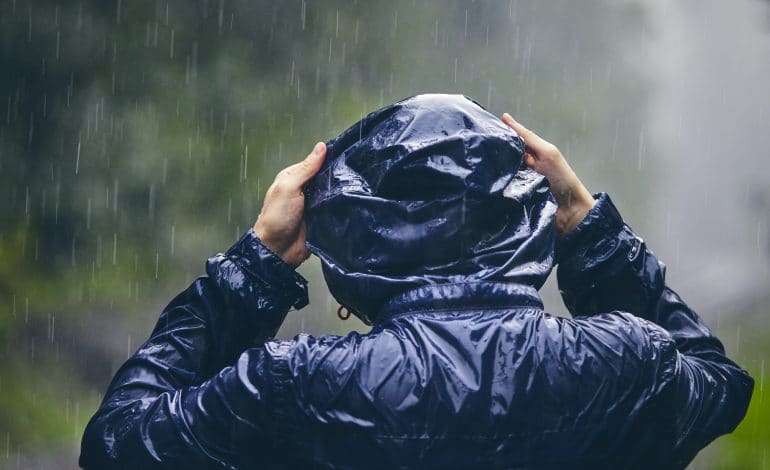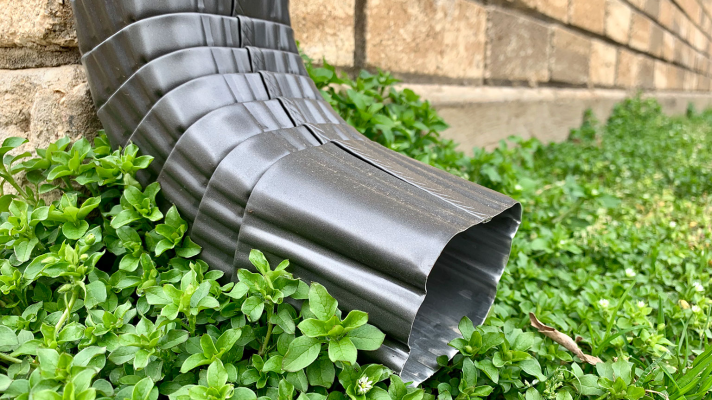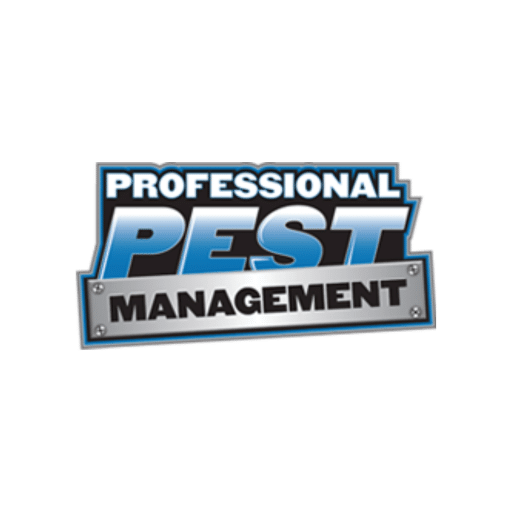How to Deal with Pests After the Rain

Increased precipitation boosts activity from moisture-loving bugs like mosquitos, ants, & termites
Which bugs come out when it rains? Mosquitoes lay their eggs in stagnant water. Ants climb out of the anthill. Cockroaches, scurry out from crevices and cracks in the floor or wall. Termites form colonies in the walls, on the door frames; under the floorboards. So after heavy rainfall, mosquito populations can increase, ants can migrate, termites can rumble, and don’t let me get started on cockroaches.
It is common for pests like ants and roaches to pop up more in your home or business after heavy rain. Why does this occur? The answer is fairly simple. Bugs like the rain about as much as we do, which is not at all! Roaches, for example, live in drains, pipes, sewers, and other places that typically flood due to heavy rain.
Pest Movement during precipitous rain is an essential question as cold temperatures can slow insects down. The water droplets add weight to the insects and can make their wings stick together. Furthermore, high winds can quickly push insects off course, and they may have to expend more energy to stay on track. So to answer this, we’ll have to consider a couple of things.
- Bugs are exothermic (cold-blooded)
- Pest preferences and behaviors.

Cold Blooded – But Not Cold Hearted
Insects are ectothermic, and therefore, their body temperature and activity are heavily influenced by their environment. So generally, the colder it is, the slower insects move, and the warmer it is, the faster and more active insects are. However, if the environment ultimately dictates your life, it is hard to exist for very long, especially if you’re a tiny insect. You don’t want just to be frozen in place every time an unexpected chill blusters by.
Some insects have some tricks up their sleeves to help them deal with the inclement weather.
If bees get too cold, they’ll huddle together and shiver – just like us – to keep themselves warm. Queen bumblebees disengage their wings and use the flight muscles to generate heat to help them forage food in the early, chilly spring.

Why Do I Have Bugs In My House After it Rains?
ROACHES
It is common for pests like ants and roaches to pop up more in your home or business after heavy rain. This is especially true after periods of heavy and sustained rainfall, like during a hurricane here in NC. So why is this? Why does it seem like there are more bugs in your home during or after it rains? Well, the answer is that bugs like the rain about as much as we do, which is not at all! Roaches, for example, live in drains, pipes, sewers, and other places that typically flood due to heavy rain. To avoid drowning, they will flee upward by whatever means necessary. Even if that means following a drain or pipe into your home! It is very common for people to find roaches in their home after it rains that have moved up from their crawlspace or foundation, or traveled in through their pipes or drains.
ANTS
Another pest that is infamous for showing up after a rain shower is the ant. These insects usually live our in your front or backyard in their little mounds and holes, but when the rain comes they find their homes flooded and destroyed. Does that mean they simply leave and never return? Unfortunately not. Instead, ants are more apt to simply head for your home, the driest and warmest location nearby that can provide them shelter. They’ll find their way in however possible, through cracks, under doors, anything to escape the rain.
HOUSE CENTIPEDES
The third pest that frequently pops up after a heavy rain is the house centipede. Though these many-legged insects have a pretty disgusting and creepy appearance, they are actually good for your home in a way. They usually live under the house in the foundation or crawl space and can chase off other insects like roaches, ants, or moths.
However, like roaches and ants, these creatures quickly make their way up to drier territory like the living room after heavy rain. It is very common for increased sightings of house centipedes to occur after a thunderstorm or prolonged rain during a rainstorm. Want to get rid of unwelcome insect intruders? Don’t worry, call Professional Pest Management! We are professionals.

HOW TO DEAL WITH INSECTS AFTER A STORM
An increase often follows intense rainstorms in insect pests. Here’s why—and what to do about it.No matter the season, bugs seem to tailor their behavior to match what’s happening with the weather, and that’s particularly noticeable after a big rainstorm or a hurricane. As a result, you may notice insects like mosquitoes, fire ants, and wasps out and about in far greater numbers than usual—and that can be a problem. Mosquitoes love moisture and humidity and can seem even more aggressive after a storm. What’s more, all of that rain can cause the local mosquito population to explode.
Storms leave pools of water—both on the ground and in places like plant pots, old tires, birdbaths, and even kids’ toys—that can soon become stagnant, providing mosquitoes with loads of prime habitat for breeding. Many mosquitoes lay their eggs in this kind of standing water, and if allowed to mature, these young mosquitoes will emerge from the water in 7 to 10 days. Other types of mosquitoes lay their eggs in moist soil in low-lying areas; after the area floods, the eggs hatch, releasing vast numbers of the pests.
Other bugs also come out en masse following periods of heavy rain, as the water soaks into the ground and fills their nests with water. Ants (including fire ants) and subterranean termites will bustle to get to higher ground. During a big storm or long period of rain, they may even seek out shelter in places like your home. These insects will not return to their nests until the rain stops and the nests dry out. Insects can be a huge problem after a hurricane.
The resulting flooding can damage wasp and hornet nests and flood out Yellowjackets, leaving them homeless and looking for shelter. Fire ants forced to abandon their nests will form rafts to find a dry place to land. These rafts may look like mats, streamers, or even balls. Once they find a landing place, they may come indoors in search of food. In addition, as damp, damaged wood begins to decay, it turns into a haven for carpenter ants. The list goes on. If you’ve got a pest problem—even a minor one—chances are a hurricane or other major storm will make it much worse.

What to Do About Insects After a Storm
Mosquitoes
- If possible, stay indoors during times when mosquitoes are most active. If you need to venture out during those times, you should take care to protect yourself. Wear long sleeves and long pants (light colors are best) and an EPA-approved repellent.
- Empty any objects holding standing water.
- You can kill the mosquitoes invading your yard with bug spray.
Fire Ants
- Be very careful when picking up debris. Also, wear sturdy work gloves, along with long pants, a long-sleeve shirt, socks, and boots.
- Know that fire ants can climb shovels and other tools. A coating of talcum powder on the tools can make it harder for the ants to make progress.
- Don’t use bait products right after flooding, as the colonies are not organized enough to be effective. When mounds reappear, treat them with Fire Ant Killer to kill the queen and destroy the mound.
Wasps, Hornets, & Yellowjackets
- Wear gloves and protective clothing when moving debris, and be sure to look before you lift.
- Don’t leave food or drink uncovered.
- Don’t use products on individual insects that are meant to be sprayed on nests.
- Use a Mosquito & Bug Killer Bug Spray or Area Fogger to kill wasps, hornets, and Yellowjackets in your lawn and landscape, use Mosquito & Bug Killer Area Fogger.
Insects Trying to Enter Your Home
- Create a barrier to keep shelter-seeking insects out of your house by applying an Indoor Insect Killer or bug spray – around windows and doors and along baseboards.
- If any insects manage to make it inside, control them with a product like Flying Bug Killer with Essential Oils as soon as you spot them.

How to Protect Yourself Before the Next Storm Comes
Unfortunately, this probably won’t be the last rainstorm you’ll face—but there are things you can do to make the resulting pests less of a problem. Try these tips (and always follow the directions on the label):
- Apply an Indoor Insect Killer liberally in between cracks and crevices, under appliances, and around entry points like doors and windows.
- Kill fire ant colonies with Fire Ant Killer, then spread Fire Ant Killer Broadcast Granules on your lawn to help control new mounds.
- Control other ant colonies (along with other listed insects) in your yard with Lawn Insect Killer.
- Use Termite & Destructive Bug Killer to control termites.
- Prune shrubs and tall grasses where insects can hide.
- Inspect your exterior home walls for any cracks or holes, and be sure to caulk them to keep out both insects and water.
- Call a professional if you need help with your pest control efforts.
Storms can wreak a lot of havoc, leaving lots of problems behind once they pass through. But a little know-how can go a long way toward minimizing the effects insects have on your life and home after the rain finally subsides.


Schedule an inspection/service by calling our office (877.232.3055) during office hours or by going to this link: https://professionalpestmgmt.schedule-service.com/ and providing us with your full name, property address, email, & phone number.
Related Posts
Professional Pest Management © Copyright 2022 - All Rights Reserved
